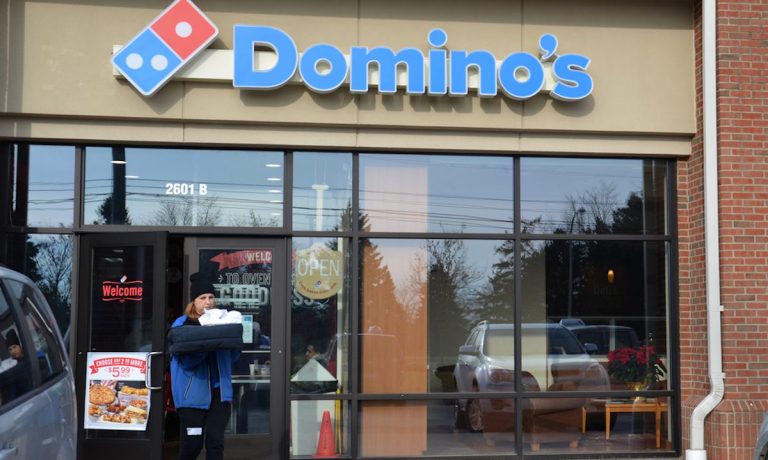With digital off-premise ordering remaining elevated even as labor conditions make it difficult for restaurants to meet demand, Domino’s is looking for ways to reduce its own labor costs by encouraging consumers to pick up the slack.
Discussing current labor conditions, Domino’s CEO Richard Allison told CNBC on Thursday (Nov. 4), “It’s certainly impacted us here at Domino’s and broadly across the restaurant industry is one of the tightest labor markets we’ve seen in a long time. So there are a lot of things we’re trying to do … to affect the outcomes here.”
In addition to internal changes such as raising wages, adding benefits and implementing automated technologies to make the work more efficient, the chain is also trying to usher consumers to channels that may be more time-intensive for them, but that save labor for the company. On a call with analysts last month, Allison discussed the company’s initiative to push its carside delivery program — which, contrary to the name, is a pickup channel by which consumers drive to the restaurant and have their order brought out to their car.
In effect, the company is outsourcing the delivery labor to the consumer. After all, if a consumer who lives a mile away from their closest Domino’s wants to eat a pizza at home, someone is going to have to travel a mile, at least until autonomous delivery becomes more widespread. By encouraging carside and other pickup channels, Domino’s is saving its employees and contractors the trip by shifting the labor to the consumer.
Domino’s saw its sales soar during lockdown, with its existing delivery infrastructure making it possible for its restaurants to meet demand. Now, even as consumers have returned to their lives away from home, sales remain well above pre-pandemic levels. In the third quarter, for instance, same-store sales were up about 15% worldwide on a two-year basis.
“If you look at both our U.S. and international businesses … [it’s a] significantly larger business than we had a couple of years back,” Allison told CNBC.
Advertisement: Scroll to Continue
Sure enough, PYMNTS research finds that consumers continue to order from digital channels and to assert that the availability of these channels will be key to restaurants’ future success. PYMNTS’ report The Bring-It-to-Me Economy: How Online Marketplaces and Aggregators Drive Omnichannel Commerce, created in collaboration with Carat from Fiserv — which featured a survey of more than 5,200 U.S. consumers about their preferences in dining and food shopping — found that 46% of consumers are buying groceries online more often than before March 2020, and that figure rises to about six in 10 for Gen Zers, millennials and bridge millennials.
See also: Bring-It-to-Me Economy Ascends as Consumers Embrace Home-Centric Lifestyles
In the same vein, according to data from the 2021 Restaurant Readiness Index, created in collaboration with Paytronix, 64% of all quick-service restaurant (QSR) orders come from digital channels (pickup, third-party aggregators, mobile order-ahead and online delivery). Plus, the Index also found that about half of all restaurant customers believe that the ability to pay online, the ability to order online and the availability of loyalty programs will be important to restaurants’ future success.
Read more: QSRs’ Lagging Loyalty-Reward Investment Hurts Innovation and Sales




